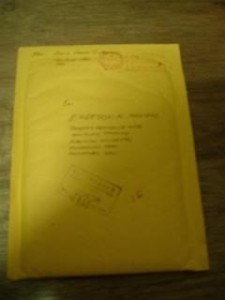Someone licensed your music and will be asking for your master recording. So are you going to prepare and deliver your master recordings?
There are actually two aspects you should be focusing on the delivery. These are the:
a.) Audio Format.
b.) Method of delivery
Delivering Audio Masters using Traditional Method
Let’s start with the traditional method. This is delivery using CD, DVD, hard drives, or other physical storage media. The audio format (whether it’s 16-bit WAV, 24-bit WAV or MP3) depends on your customer request, some example below:
a.) If you are delivering less than 15 songs to your customer. Then use the CD audio wav format of your masters. These should be in 16 bit/44.1Khz resolution. This is also the end/complete format of most audio mastering houses.
Burn all 16 bit/44.1Khz audio wav files as an audio CD then make sure to select the best CD media for burning your tracks. Burn it at the lowest rate as possible like 1x, 2x, or 4x.
c.) If you are delivering more than 15 songs, you have it burn into a high capacity medium such as DVD.
d.) If the client prefers MP3 format, then send the best format that is 320 kbps MP3 version of all the music (Constant bit rate encoded).
A single CD can handle more than 50 to 70 MP3 masters at 320kbps.
Some clients strongly require WAV files since it is uncompressed; but some would also accept MP3 format.Whether you send using a 16-bit/44.KHz master or an MP3 master, make sure it is broadcast ready as processed by a mastering engineer. Don’t send raw mix version to your client.
If you don’t have an MP3 version, you can use some recording software that has the functionality of creating a 320kbps MP3 from 16 bit/44.1Khz masters. You can use the LAME encoder for best results. You can read this tutorial on how to do this in Adobe Audition or Audacity:
How to add a lame encoder in Adobe Audition?
If you are using a different recording software (e.g. Reaper Digital audio workstation or Audacity); you can still use the LAME MP3 encoder.
Important: Do not forget to list tracks in the CD case, especially the exact titles of those tracks that are licensed by your customer. Make sure it contains the same order as the one of the MP3 CD. Take advantage of the MP3 ID3 tagging system so you can embed the track title, artist and everything in the MP3 file.
d.) Be careful about the shipment. Because this is a physical CD and would be susceptible to damage, you are going to send this to your client using Courier method (DHL, FedEx, etc). In this case, one must be careful during shipment to avoid damage to the CD. Make sure you communicate this with your preferred courier and to your client.
It is recommended to place your CD envelopes that are designed for sending CD. They usually contain Styrofoam-based/bubble plastics that would reduce impact damage.
If your client requires 24-bit masters, then the only option is to burn them into a DVD or an USB external hard drive. There are many low-cost high capacity hard drives today that can easily accommodate large number of 24-bit masters. Again, handling can be an issue since DVD or hard drive can be fragile.
The golden rule is to ask your client in advance as to their preferred audio format. Make sure you send them exactly what they need. Don’t send them MP3 masters if they are asking for 24-bit WAV masters, they will be disappointed.
